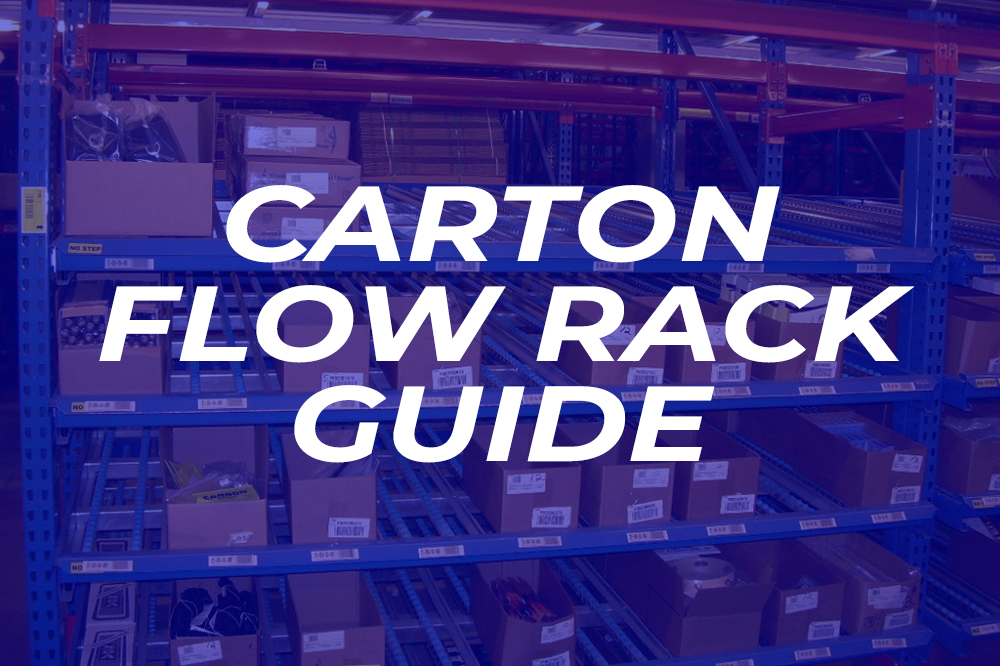-
Home
-
Advanced Carton Flow Rack Guide

Advanced Carton Flow Rack Guide
August 20, 2013
All types of flow rack use wheels or rollers, which are gravity powered, to transport products from the rear of the racking system to the front automatically. This is a “first in, first out” style of inventory, which is great for automatically rotating products.
Dynamic vs. Static
Flow rack is a dynamic racking system, because stocking and picking operations are kept separate. This allows for less accidents and time lost due to traffic interference, and more accurate inventory upkeep. A static system would be traditional rows of shelving, where products are loaded and unloaded from the same location. This is good for certain applications, but can also cause a lot of traffic, which can slow down picking and stocking times.
Four Main Types of Flow Rack
Pallet flow racking is one of the least expensive styles of flow rack because it only requires slim lanes of wheels, also known as pallet flow rails, to transport the product. As the name implies, this style requires inventory to be placed on pallets, as the wheels are spaced in a way which are only compatible with pallets. The pallet flow rails have brakes that slow down the pallet as it travels to the front of the rack.
The main advantage of this style is it allows for pallets to be stored 15 pallets deep. However, the braking system is set to a certain weight based on the product on the rails, so all of the pallets must be of similar weight. Otherwise a pallet that is too light will stop sliding forward, causing that row of pallets to stop. If pallets are similar weight, then the braking system allows for controlled movement down the rails.
Skate-wheel flow rack uses staggered and equally spaced “skate” wheels to transport the product to the front of the racking. This style allows for unrestricted product weight and size because there are no lanes. Skate wheels can be made of plastic or metal, depending on the product being stored. Typically, skate wheels can hold more weight than flow rails because the weight is more evenly distributed among a larger number of wheels.
Carton flow rackis similar to pallet flow, except product travels along equally spaced gravity rollers. Unlike pallet flow, carton flow rack does not require products to be loaded onto pallets. This style allows for different sized and shaped products to travel along the rollers to the front of the system. There is no braking system built into carton flow rack, but most feature a lip on the front to prevent products from falling out.
Span-track uses roller lanes to transport product to the front of the racking. Because the lanes are a certain width, products must also be of similar width to be transported to the front of the racking. Flow tracks can actually be installed into existing pallet racks using a clip to secure each to the beams. Rollers come in varying widths depending on your application.
So Which Type is Right for Me? We understand that this might help explain a lot, but you still have questions. Feel free to give us a call at American Surplus Inc. anytime; we will be happy to work with you to provide solutions to your potential material handling problems. Our sales team will speak with you to figure out what you are trying to accomplish so that they can recommend the best material handling solution. We will take the time to explain to you the possible options and why we recommend one over the other, based off your specific needs.